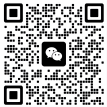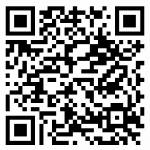EssyQuality提供:北美英语exam代考、论文代写,提纲写作指导,留学生exam代考、论文代写、论文英语摘要代写,Accountingexam代考、论文代写,英语Accounting代写、apa格式写作、mla格式写作、代考、exam代考、paper代写、assignment代写、exam代考、网课托管、online exam代考、online exam代考、quiz代考,Exam代考。。。
Keywords: friendships, mixed majors, similarmajors, teams
Businessfactors that must be present for a team tobe successful: openness, supportiveness,action orientation, and a positive personalstyle. LaFasto and Larson’s research suggeststhat the approach and personality ofthe team member have a greater bearingon the person’s effectiveness within theteam than do differences in background.Losoncy (1997) outlined sevenrequirements for a successful team:synergy, cooperation, determined focus,mutual respect, reality base, optimism,and progress. Although differences inbackgrounds, approaches, and beliefscan get in the way, Losoncy’s findingssuggested that diversity is not a requirementor an obstacle, particularly fora normal work group. However, manyfirms today use teams to promote creativityand innovation to meet and beatthe competition. Theoretically, the morediverse a team is, the more creative andproductive it can be. However, researchon the impact of diversity on team effectivenesshas been inconclusive.
Benefits and Drawbacks ofDiverse Multicultural TeamsOne of the biggest sources of differencewithin a team can be culture.According to Adler (1991), “Multiculturalgroups have more potential forhigher productivity than do homogeneousgroups, but they also bear the riskof greater losses due to faulty process”(p. 128). Adler described the causes ofdysfunction in a multicultural group:Diversity makes group functioning moredifficult because it becomes more difficultto see situations in similar ways,understand them in similar ways, andact on them in similar ways. Diversitymakes reaching agreement more difficult.Employees from the same culture aregenerally easier to manage; they are morelikely to communicate clearly and to trusteach other more readily. (pp. 128–129)Some additional problems describedby Adler (1991) include attitudinal problemsof dislike and mistrust, perceptualproblems involving stereotyping andundervaluation, communication problemsresulting in inaccuracy and inefficiency,and stress leading to tensionand decreased effectiveness. However,Adler asserted that the advantages of aculturally diverse group include limitedgroupthink and more and better ideas.
“Multicultural teams have the potentialto become the most effective andproductive teams in an organization.Unfortunately, they frequently becomethe least effective” (Adler, 1991, p.134). Diversity, like any resource, mustbe effectively used and managed to addvalue to the team’s function. Unless it ismanaged properly, diversity may actuallyderail the team if diverse members goin different directions. Where creativityis needed, diversity can jump-start theproject, especially in the early stages.However, for more routine projects,diversity may be a hindrance, ratherthan a help, to the team function.Too much emphasis on diversity may bea stumbling block for a team, as Gardenswartzand Rowe (1994) found. Accordingto their research, the four layers ofdifference are, in order of importance,(a) personality; (b) age, gender, physicalability, ethnicity, etc.; (c) appearance,work experience, religion, personal habits,etc.; and (d) seniority, work location,management status, field, etc.www.ukthesis.org





